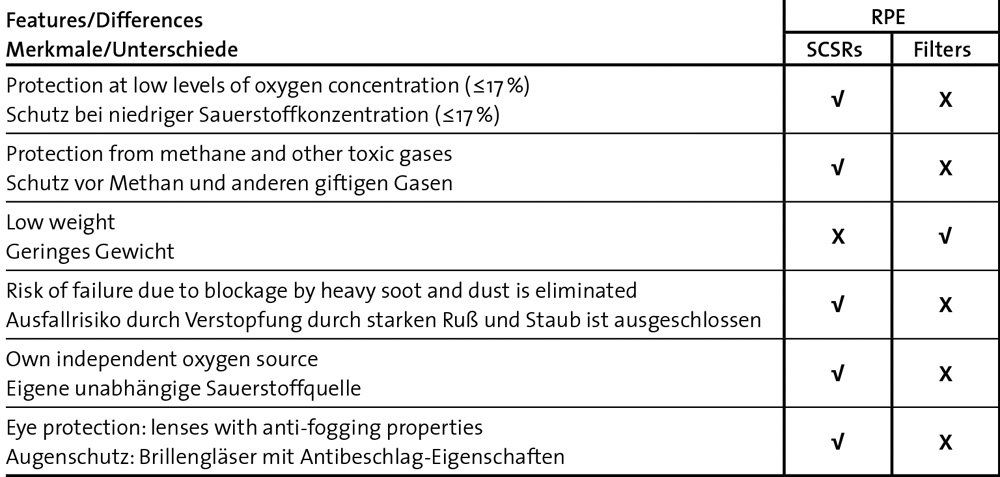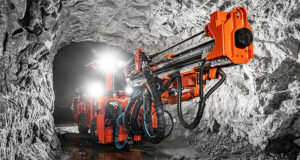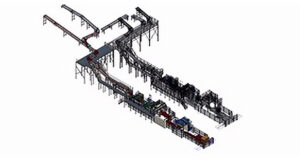A significant number of accidents that have occurred in mines in recent years have underlined the importance of special precautions and innovative technologies to improve the safety of miners working underground. BT Bautechnik 24 GmbH, Schwäbisch Gmünd/Germany, discussed this question with representatives of DEZEGA, a world leader in the development and manufacture of rescue equipment.
DEZEGA is an international company with Ukrainian roots that specialises in the development and production of self-contained respiratory protective equipment (RPE). RPE isolates the human respiratory organs and forms an autonomous system completely independent of the ambient atmosphere, producing oxygen for inhalation and absorbing CO2 on exhalation. This equipment literally saves miners’ lives by enabling them to breathe and survive underground in case of emergency.
The company reached its current level of performance only after many years and several generations of effort. Production of the first RPE began in 1966. Today, DEZEGA supplies its products to more than 50 countries. Production complies with the international and national standards of the EU, Ukraine, Australia, India, South Africa and the Eurasian customs union. The company has official representatives in five regions of the world. DEZEGA production facilities are located in Europe and Asia. Administrative headquarters and the R&D centre are located in Kyiv/ Ukraine.
All too frequently, genuine steps to improve the level of safety for miners underground are not initiated until after major accidents claiming a large number of victims have occurred. After a series of serious accidents in various countries around the world, lawmakers began adopting legislation for the compulsory use of self-contained RPE, the use of new technologies in mining and the training of miners.
Accidents and fatalities drove the transition to self-contained RPE. In 1986, a fire in the Kinross gold mine (South Africa) claimed 177 lives. The miners had no RPE. Subsequent investigation revealed that the oxygen level was below 17 % and the concentration of toxic gases exceeded permissible levels several times over. Even if there had been filter equipment available, miners would have died. The government’s response was to initiate the mandatory use of self-contained RPE.
In 1991, a fire broke out in the coal mine “Yuzhnodonbasskaya #1” in Ukraine. Thirty-two miners died. Combustion products poisoned them because their filters were clogged with soot. After the incident, the government decided to make self-contained self-rescuers (SCSR) mandatory in all coal mines. A similar situation involving filter equipment and causing 25 deaths occurred at the Darasunsky gold mine in Russia in 2006. The filters were also clogged with soot. In consequence, the obligatory transition to self-contained RPE was imposed on all mines. This regulation had previously applied solely to coal mines.
There have been many similar cases in Australia, the former Soviet republics, Vietnam, Europe, Asia and South America.
Some mining companies rely on the implementation of VISION ZERO. A core element of VISION ZERO is the concept of zero injuries – all accidents can be prevented. The concept is based on the principles of risk management, safety and health at work and employee training.
One important aspect is instructing users in putting on the equipment and breathing properly. The training is supposed to take place under realistic conditions: poor visibility, smoke, risk of disorientation. This approach is taken by many countries where safety receives the attention it deserves: in the USA, in South Africa, Australia, Russia and Ukraine.
As can be seen in practice, the mandatory training of miners working underground takes place even after accidents. The explosion at the Sago mine in the USA, e. g., led to a review of the approach to worker safety. In 2006, twelve people died owing to a lack of practise and training. The investigation determined that the miners had put on the SCSR devices in time, but they interrupted their breathing to talk to each other and when, after a time, the breathing gas mixture became hot and humid and inhalation was difficult, they made the fatal decision to remove the devices, believing that they failed. Theoretically, they knew that inhalation from a self-rescuer could present such difficulties, but they had never experienced them in practise. After this tragedy, the Miners Act was passed in 2006. It provides for mandatory regular training, including activation of the self-rescuers, to familiarise users with the procedure for putting on the equipment and with breathing conditions.
Filtering respirators eliminate only some gases, not all. Furthermore, they are not able to protect miners in an environment with an oxygen level lower than 17 %. The use of SCSR devices is a significant step forward in improving miners’ safety and occupational safety. After all, SCSRs completely isolate users from the ambient atmosphere and protect them from any concentration of toxic gases (Table 1).
In the USA, in Canada, South Africa, Ukraine, Poland, the Czech Republic, Bulgaria, Russia, Kazakhstan, Australia, Serbia, Bosnia-Herzegovina, Ireland and the Scandinavian countries, self-contained RPE is used in both coal and non-coal mines.
Further information:
BT Bautechnik 24 GmbH
www.btbshop24.com



